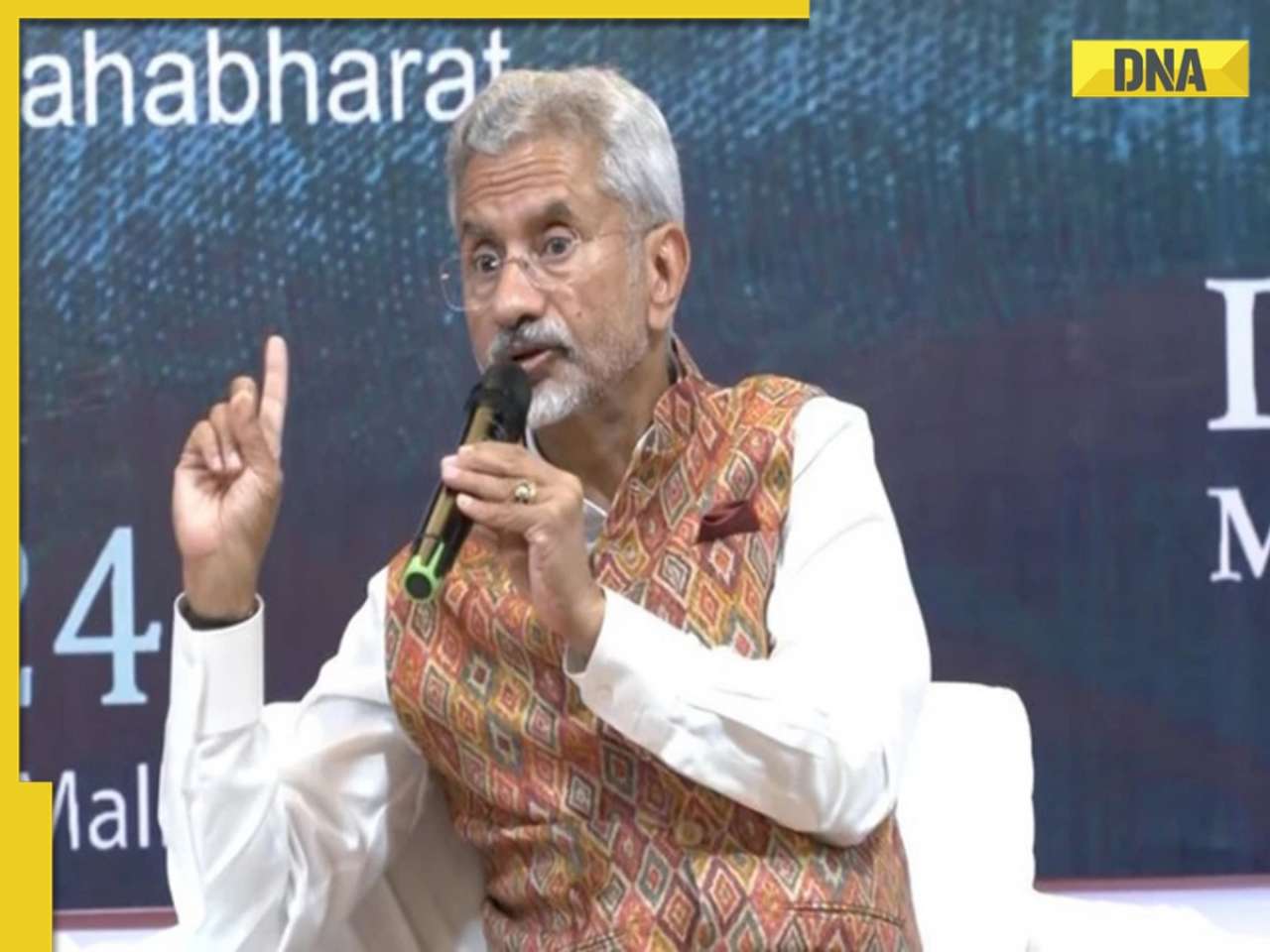Adam Gilchrist's squash ball-in-glove issue may have kicked up a mini-row, but the cricket fraternity in India sees it as an unnecessary fuss over an innocuous ploy.
NEW DELHI: Adam Gilchrist's squash ball-in-glove issue may have kicked up a mini-row in some parts of the world, especially Sri Lanka, but the cricket fraternity here sees it as an unnecessary fuss over an innocuous ploy.
"I think this is nothing but an unnecessary controversy. Gilchrist did not use a bat longer or wider than prescribed. He did not do anything that violates any law and there is no need to make an issue out of it," former Indian stumper Kiran More said.
After hitting the match-winning knock of 149 in the World Cup final against Sri Lanka, Gilchrist, who had an average run of form till the final, revealed that he had put a squash ball in his batting glove for a better grip and it paid off.
More than a week after the final, Sri Lanka Cricket Secretary Kangadaran Mathivanan alleged it may not be illegal under existing ICC rules but was as unethical as Trevor Chappell's infamous underarm delivery.
Mathiavan, however, did not find too many takers of his view even in Sri Lanka.
SLC Chief Executive Duleep Mendis distanced himself from the comment and even off-spinner Muttiah Muralitharan said that the team did not find anything objectionable in it.
More did not find anything wrong with the ploy either.
"You hear about stumpers who used steak inside their keeping gloves and putting extra tapes to help them save their fingers while catching. Even when batting, players sometimes use extra cushion inside the glove, which is just perfect," he said.
Incidentally, another Australian, Rod Marsh, used to place steak in his keeping gloves while keeping to the Dennis Lillee-Jeff Thomson pair.
More said, "Gilchrist is a predominantly bottom-hand player and he put that squash ball in his bottom hand, which probably helped his grip."
Asked if he ever tried anything in his batting glove, More said, "No, sometimes we used padding but otherwise the inner glove was enough."
Former player and ex-coach Madan Lal believes on the same line and says nothing should be taken away from Gilchrist's knock.
"Squash ball in the glove or not, a ton is always a ton and it's even more special coming in a World Cup final. Full credit to Gilchrist," he said.
On the squash ball issue, he said, "I think it definitely helped his grip but he must have practised it in the nets. Otherwise you don't go out to bat in the final with a squash
ball inside the glove, which is bound to make you feel uncomfortable."
Asked how much impact it could have while playing a shot, Lal said, "I can't really say. I think I should try it once before I can really elaborate."
Lal was rather uncomfortable with the idea of batting with a rubber lump inside the glove.
"Your fingers sweat inside the inner gloves and the squash ball might stop the handle from slipping. But if you ask me, it would have affected my concentration," he said.
Delhi Ranji player Shikhar Dhawan did not seem impressed by the idea of using squash balls.
"It may have suited him but I have never done anything like this in my 10-year career, nor I do feel attracted to the idea. You sometimes need padding inside if the glove is weak, otherwise the inner glove is all you have to save your fingers from express deliveries," he said.
Interestingly, one Vijitha Herath of the University of Paderborn, Germany, has offered an explanation on how the squash ball could have helped Gilchrist.
Herath argued a squash ball, like a rubber ball, compresses when pressure is applied to it and when the pressure is relieved, it springs back to its original shape.
The bottom hand compresses the squash ball and stores energy and when the blade comes in contact with the cricket ball.
"...this pressure starts to relax while the bat is moving forward. At the same time the energy stored in the squash ball releases its energy to the bat in the form of kinetic energy.
The result is that the bat moves faster than normal.
"As a result, the release-speed of the cricket ball becomes faster, resulting in the ball travelling further before hitting the ground. Therefore, it results in more sixes and fours being scored," Herath told the 'The Nation' newspaper.
![submenu-img]() Meet IIT-JEE topper with AIR 1, son of government school teachers, he went on to pursue...
Meet IIT-JEE topper with AIR 1, son of government school teachers, he went on to pursue...![submenu-img]() Salman Khan house firing case: One more Lawrence Bishnoi gang member arrested by Mumbai Police
Salman Khan house firing case: One more Lawrence Bishnoi gang member arrested by Mumbai Police ![submenu-img]() Mukesh Ambani to host Anant-Radhika's second pre-wedding function: Trip to start from Italy with 800 guests and end in..
Mukesh Ambani to host Anant-Radhika's second pre-wedding function: Trip to start from Italy with 800 guests and end in..![submenu-img]() Driver caught on camera running over female toll plaza staff on Delhi-Meerut expressway, watch video
Driver caught on camera running over female toll plaza staff on Delhi-Meerut expressway, watch video![submenu-img]() 'If you come and do something here...': EAM S Jaishankar on India's 'message' against terrorism
'If you come and do something here...': EAM S Jaishankar on India's 'message' against terrorism![submenu-img]() Meet IIT-JEE topper with AIR 1, son of government school teachers, he went on to pursue...
Meet IIT-JEE topper with AIR 1, son of government school teachers, he went on to pursue...![submenu-img]() TN 11th Result 2024: TNDGE Tamil Nadu HSE (+1) result declared, direct link here
TN 11th Result 2024: TNDGE Tamil Nadu HSE (+1) result declared, direct link here![submenu-img]() Meet doctor who cracked UPSC exam with AIR 9 but didn’t became IAS due to…
Meet doctor who cracked UPSC exam with AIR 9 but didn’t became IAS due to…![submenu-img]() TN 11th Result 2024 to be declared today; know how to check
TN 11th Result 2024 to be declared today; know how to check![submenu-img]() Meet man who worked as coolie, studied from railway's WiFi, then cracked UPSC exam to become IAS, secured AIR...
Meet man who worked as coolie, studied from railway's WiFi, then cracked UPSC exam to become IAS, secured AIR...![submenu-img]() DNA Verified: Is CAA an anti-Muslim law? Centre terms news report as 'misleading'
DNA Verified: Is CAA an anti-Muslim law? Centre terms news report as 'misleading'![submenu-img]() DNA Verified: Lok Sabha Elections 2024 to be held on April 19? Know truth behind viral message
DNA Verified: Lok Sabha Elections 2024 to be held on April 19? Know truth behind viral message![submenu-img]() DNA Verified: Modi govt giving students free laptops under 'One Student One Laptop' scheme? Know truth here
DNA Verified: Modi govt giving students free laptops under 'One Student One Laptop' scheme? Know truth here![submenu-img]() DNA Verified: Shah Rukh Khan denies reports of his role in release of India's naval officers from Qatar
DNA Verified: Shah Rukh Khan denies reports of his role in release of India's naval officers from Qatar![submenu-img]() DNA Verified: Is govt providing Rs 1.6 lakh benefit to girls under PM Ladli Laxmi Yojana? Know truth
DNA Verified: Is govt providing Rs 1.6 lakh benefit to girls under PM Ladli Laxmi Yojana? Know truth![submenu-img]() Remember Harsh Lunia? Just Mohabbat child star, here's how former actor looks now, his wife is Bollywood's popular...
Remember Harsh Lunia? Just Mohabbat child star, here's how former actor looks now, his wife is Bollywood's popular...![submenu-img]() Mother's Day 2024: Bollywood supermoms who balance motherhood, acting, and run multi-crore businesses
Mother's Day 2024: Bollywood supermoms who balance motherhood, acting, and run multi-crore businesses![submenu-img]() Rocky Aur Rani's Golu aka Anjali Anand shocks fans with drastic weight loss without gym, says fitness secret is...
Rocky Aur Rani's Golu aka Anjali Anand shocks fans with drastic weight loss without gym, says fitness secret is...![submenu-img]() In pics: Ram Charan gets mobbed by fans during his visit to Pithapuram for ‘indirect campaign’ for uncle Pawan Kalyan
In pics: Ram Charan gets mobbed by fans during his visit to Pithapuram for ‘indirect campaign’ for uncle Pawan Kalyan![submenu-img]() Streaming This Week: Yodha, Aavesham, Murder In Mahim, Undekhi season 3, latest OTT releases to binge-watch
Streaming This Week: Yodha, Aavesham, Murder In Mahim, Undekhi season 3, latest OTT releases to binge-watch![submenu-img]() Haryana Political Crisis: Will 3 independent MLAs support withdrawal impact the present Nayab Saini led-BJP government?
Haryana Political Crisis: Will 3 independent MLAs support withdrawal impact the present Nayab Saini led-BJP government?![submenu-img]() DNA Explainer: Why Harvey Weinstein's rape conviction was overturned, will beleaguered Hollywood mogul get out of jail?
DNA Explainer: Why Harvey Weinstein's rape conviction was overturned, will beleaguered Hollywood mogul get out of jail?![submenu-img]() What is inheritance tax?
What is inheritance tax?![submenu-img]() DNA Explainer: What is cloud seeding which is blamed for wreaking havoc in Dubai?
DNA Explainer: What is cloud seeding which is blamed for wreaking havoc in Dubai?![submenu-img]() DNA Explainer: What is Israel's Arrow-3 defence system used to intercept Iran's missile attack?
DNA Explainer: What is Israel's Arrow-3 defence system used to intercept Iran's missile attack?![submenu-img]() Salman Khan house firing case: One more Lawrence Bishnoi gang member arrested by Mumbai Police
Salman Khan house firing case: One more Lawrence Bishnoi gang member arrested by Mumbai Police ![submenu-img]() Meet actress, who got rejected for her looks, had no hit for 15 years; later beat Alia, Deepika, Katrina at box office
Meet actress, who got rejected for her looks, had no hit for 15 years; later beat Alia, Deepika, Katrina at box office![submenu-img]() Abdu Rozik breaks silence on his wedding announcement being called ‘publicity stunt’: ‘The whole world is…’
Abdu Rozik breaks silence on his wedding announcement being called ‘publicity stunt’: ‘The whole world is…’![submenu-img]() Meet actress who made debut with Salman Khan, had super flop career, then got TB, now lives in chawl, runs..
Meet actress who made debut with Salman Khan, had super flop career, then got TB, now lives in chawl, runs..![submenu-img]() Meet actress who worked with Naseeruddin Shah, sister of popular models, is now getting trolled on social media for..
Meet actress who worked with Naseeruddin Shah, sister of popular models, is now getting trolled on social media for..![submenu-img]() Driver caught on camera running over female toll plaza staff on Delhi-Meerut expressway, watch video
Driver caught on camera running over female toll plaza staff on Delhi-Meerut expressway, watch video![submenu-img]() Delhi man takes 200 flights in 110 days, steals lakhs worth of jewelry from passengers
Delhi man takes 200 flights in 110 days, steals lakhs worth of jewelry from passengers![submenu-img]() Viral video: Man makes paratha with 'diesel', internet reacts
Viral video: Man makes paratha with 'diesel', internet reacts![submenu-img]() Viral video of 'black jalebi' leaves internet in shock; netizens say 'hey bhagwan...'
Viral video of 'black jalebi' leaves internet in shock; netizens say 'hey bhagwan...'![submenu-img]() Real-life Bambi and Thumper? Adorable deer and rabbit video melts hearts online
Real-life Bambi and Thumper? Adorable deer and rabbit video melts hearts online





















































)
)
)
)
)
)